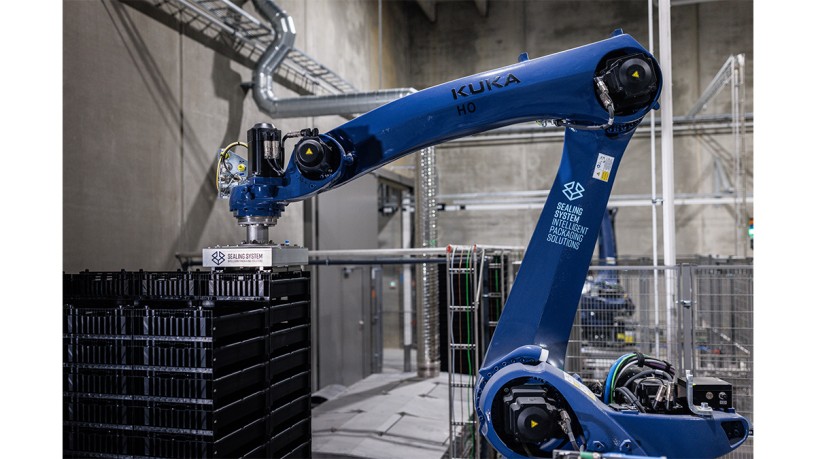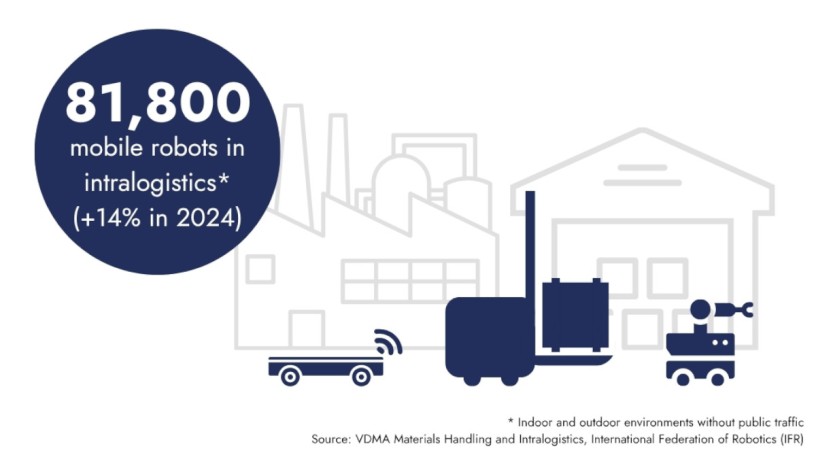Persistent Pathogens - a Challenge
"In my team I have two students who work in the field of persistence of microorganisms in food processing plants," says Michael Gänzle. The food engineer is a professor of food microbiology and probiotics at the University of Alberta in Edmonton, Canada, and conducts research in the field of food safety, among other things. "My PhD student works with meat-processing slaughterhouses in southern Alberta and has isolated more than one thousand bacteria from sampled areas in the last six months," he says. The data has not yet been fully analysed. But through genome sequencing, the researchers hope to find out whether the microorganisms found at different times and places in the plant are identical strains. "If you look at literature data, you find that some organisms occur independently of the processed raw material. Other organisms are only found depending on the commodity," the researcher explains. "This can be interpreted to mean that some of the organisms enter the plants via the raw material and some simply persist permanently in the plant."
In the process, mainly non-pathogenic organisms would emerge. These include predominantly bacteria of the genera Pseudomonas, Carnobacterium, Leuconostoc, Brochotrix but also Aeromonas and some Enterobacterieaceae. The majority of these are Gram-negative. All of them are biofilm formers that grow at cooling temperature. "On the other hand, if you look at the pathogenic organisms that are relevant in food production facilities, you inevitably come across Listeria monocytogenes," says Michael Gänzle. "Among food pathogens, this is the most important or perhaps the only organism that contaminates food by persisting in a plant."
Lineage 2 strains tend to persist
When ingested by humans, they can cause listeriosis. If the immune system is intact, the infection can be symptom-free. Very high germ counts can also lead to severe inflammation of the gastrointestinal tract. The bacteria, on the other hand, can be dangerous or even fatal for immunosuppressed people and for unborn babies in the womb. In principle, all ready-to-eat foods that have a refrigerated shelf life of more than two weeks are at risk. This is because under these conditions there is a risk that listeria can grow to such high germ counts that they make people sick. But how do the germs get into the plant in the first place?
"The pathogenic listeria can be divided into two lineages," explains Michael Gänzle. "Lineage I strains come into the plants predominantly through raw milk and raw plant-based food," he continues. "They are more virulent, but less likely to persist in the plant. It would be exactly the other way round for lineage II strains. They are less virulent. On the other hand, they are five to ten times more likely to be found in food processing plants and can then constantly contaminate the products. The example of a vacuum-packed cold cut will show how. For this, meat is mixed; shaped; heated and cooked through. With core temperatures of at least 80 degrees Celsius, this results in principle in a clean, safe product. But after heating, further process steps follow. It is cut. It is packaged. And there is the possibility of recontaminating the product with organisms that persist in the plant. "Another example is cream cheese," adds the expert. "When the milk is pasteurised, all listeria are thoroughly knocked out. But in subsequent process steps, recontamination can occur if organisms persist in the plant."
They came to stay
In order to track down the persistence of pathogenic microorganisms, two of his team members are conducting intensive research on this topic. They benefit from the fact that it has been affordable and relatively easy to sequence genomes for about eight years now. If one now has the genome sequences of isolates that were collected at different times, it can be determined on the basis of the number of differences in the genome whether the later isolate is a descendant of the earlier isolate. If there are less than 10 to 30 base pairs in a 3 million base pair genome, researchers assume that it is the same strain. "My staff's findings support a good dozen studies that convincingly show that listeria can persist in a plant over a long period of time." A study that looked at a salmon processing plant in the Northwestern United States illustrates this particularly vividly. The researchers found fewer than ten mutations in the Listeria genome, which they had collected over a period of 17 years. "If you extrapolate the data series, you come to the conclusion that the factory was colonised by two or three strains when it opened in the 1970s," Michael Gänzle summarises. "These strains remained persistent in the factory the entire time and could apparently never be completely eliminated by hygiene measures."
The city of microbes
But why does it seem so difficult to remove pathogenic microorganisms from plants? "I think the greatest difficulty lies in the nature of biofilms to take hold especially in hard-to-reach places," says the expert. "It can be a cutting machine or a conveyor belt. There are hiding places that are hard to clean unless you take the system apart and scrub the surface directly." And it is precisely this scrubbing that is important for tackling persistent microorganisms. That is because a biofilm is a very stable thing. Michael Gänzle also calls it a city of microbes and illustrates this as follows.
"The pyramids in Giza are about 160 metres high. That means they are 100 times bigger than the species that built them," he says. "A biofilm rises in fungus-like structures about 150 micrometres above the surface to which it is firmly attached. Its builders, the bacteria, are roughly estimated to be about one micrometre in size. That means biofilms are about 150 times taller than the organisms that built them." And it is this sheer size that the biofilm also owes its tenacity to. This creates an obstacle to diffusion. Disinfectants simply can't get through. "They manage the first few microns and then the disinfectant is used up," he says. "It doesn't get to the organisms sitting in the depths. The only thing that really helps is vigorous scrubbing."
Good isn't good enough
For the expert, the solution must therefore rest on several pillars. One of these is consistently implemented hygienic design. The building and machine must therefore be designed to be easy to clean. That's the hardware. The second pillar is the "software", as Michael Gänzle calls the staff. They must be comprehensively trained to implement the hygiene measures in a professional manner. And last but not least, regular comprehensive monitoring is important. This is the only way that persistent organisms can actually be discovered. "I firmly believe that average hygiene measures do not help. To get persistent pathogenic organisms under control, it really has to be the best," says the scientist in summary.

Prof. Dr. Michael Gänzle




